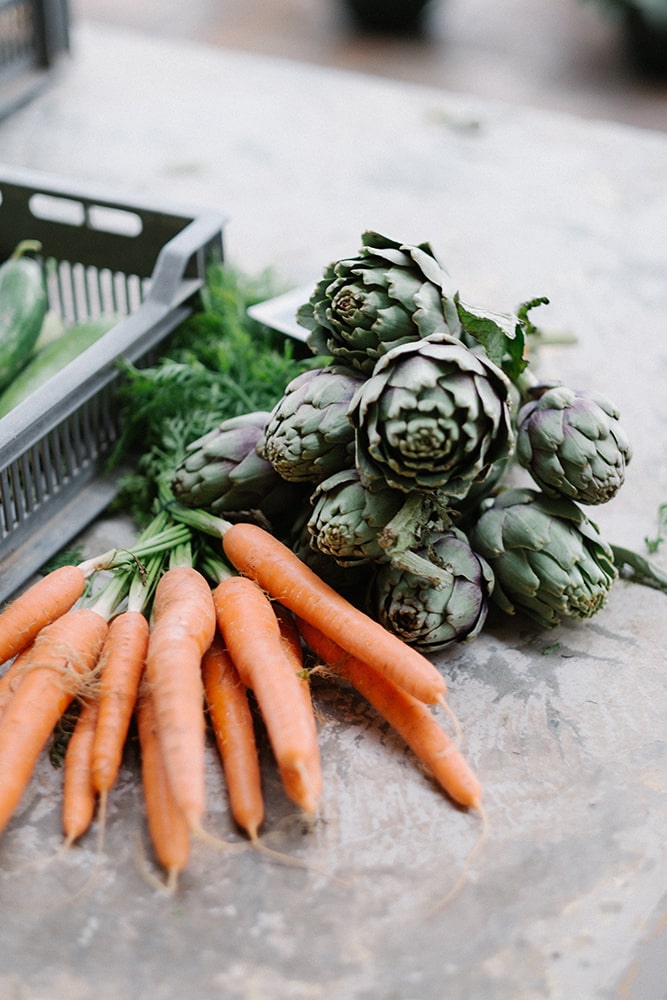


Every year, the Environmental Working Group (EWG) puts out an updated “Dirty Dozen” and “Clean Fifteen” list. If you’re new to this space, you may be wondering what that means or who the EWG is. In short, the EWG is a non profit organization that focuses on empowering people to live healthier lives in a healthier environment. The EWG uses research and education to drive consumer choice and civic action. The Dirty Dozen and Clean Fifteen are two lists that are comprised of what’s safe to buy conventional and what we should always buy organic. Each year, this list gets updated by analyzing USDA data on the chemicals/pesticides found on grocery store produce. Luckily for us, the EWG has made it super simple to evaluate and to see which produce contains the least and the most amount of pesticides so we can buy accordingly. Below you’ll find this year’s updated list and check here for last years.
Dirty Dozen (2019 Edition)
1. Strawberries
2. Spinach
3. Kale
4. Nectarines
5. Apples
6. Grapes
7. Peaches
8. Cherries
9. Pears
10. Tomatoes
11. Celery
12. Potatoes
“The most surprising news from the USDA tests reveals that the popular health food kale is among the most contaminated fruits and vegetables. More than 92 percent of kale samples had two or more pesticide residues detected, and a single sample could contain up to 18 different residues. The most frequently detected pesticide, found on nearly 60 percent of kale samples, was Dacthal, or DCPA – classified by the Environmental Protection Agency since 1995 as a possible human carcinogen, and prohibited for use in Europe since 2009.” – EWG’s 2019 Shopper’s Guide to Pesticides and Produce
Clean Fifteen (2019 Edition)
1. Avocados
2. Sweet Corn
3. Pineapple
4. Frozen Sweet Peas
5. Onions
6. Papayas
7. Eggplants
8. Asparagus
9. Kiwis
10. Cabbage
11. Cauliflower
12. Cantaloupes
13. Broccoli
14. Mushrooms
15. Honeydew Melon
毎年、Environmental Working Group(EWG)が最新の「ダーティーダース」と「クリーン15」のリストを公開しています。 見慣れない方々は、それが何を意味するのか、あるいはEWGが誰なのかと疑問に思うかもしれません。 要するに、EWGは人々がより健康的な環境でより健康的な生活を送るために焦点を当てている非営利団体です。 EWGは研究結果と教育を通して消費者に正しい選択と市民活動を行ってもらえるように取り組んでいます。 「ダーティーダース」と「クリーン15」は、従来品でも安全なものと、常にオーガニック製品を意識的に購入する必要があるものが分かる2つのリストです。毎年、このリストは食料品店の農産物で見つかった化学物質/農薬に関するUSDAデータを分析することによって更新されます。 幸いなことに、EWGでは、どの農産物が最も少なく、最も多い農薬を含んでいるかを評価し、またそれらの確認方法も非常に簡単になったため、それに応じて購入する事ができます。 今年の最新のリストは、以下の通りです、因みに昨年のものと見比べてみてください。
ダーティーダース(2019年版)
1. ストロベリー
2. ほうれん草
3. ケール
4. ネクタリン
5. アップル
6. グレープ
7. ピーチ
8. チェリー
9. 洋ナシ
10. トマト
11. セロリー
12. ポテト
「USDAのテスト結果で最も驚くべきニュースは、人気の健康食品ケールが最も汚染された果物/野菜の一つであることを明らかになった事です。 ケールのサンプルの内92%以上が2つ以上の残留農薬を検出し、1つのサンプルに最大18の異なる残留物が含まれていました。 ケールのサンプルの60%近くで最も頻繁に検出された農薬は、ダクタール(DCPA)であり、1995年以来、環境保護庁によりヒトの発がん性物質として分類され、2009年以降はヨーロッパでの使用が禁止されています。」- EWG’s 2019 Shopper’s Guide to Pesticides and Produce
クリーン15 (2019年版)
1. アボカド
2. スウィートコーン
3. パイナップル
4. 冷凍はなえんどう
5. オニオン
6. パパイヤ
7. ナス
8. アスパラガス
9. キウイ
10. キャベツ
11. カリフラワー
12. カンタループ(マスクメロンの一種)
13. ブロッコリー
14. マッシュルーム
15. ハネデューメロン